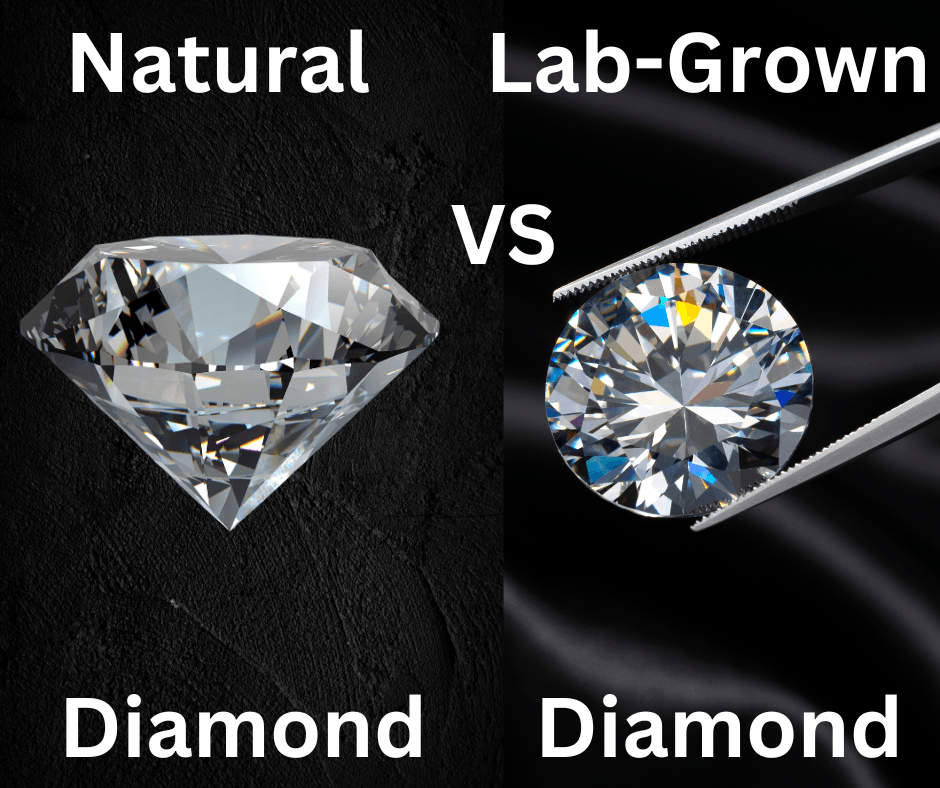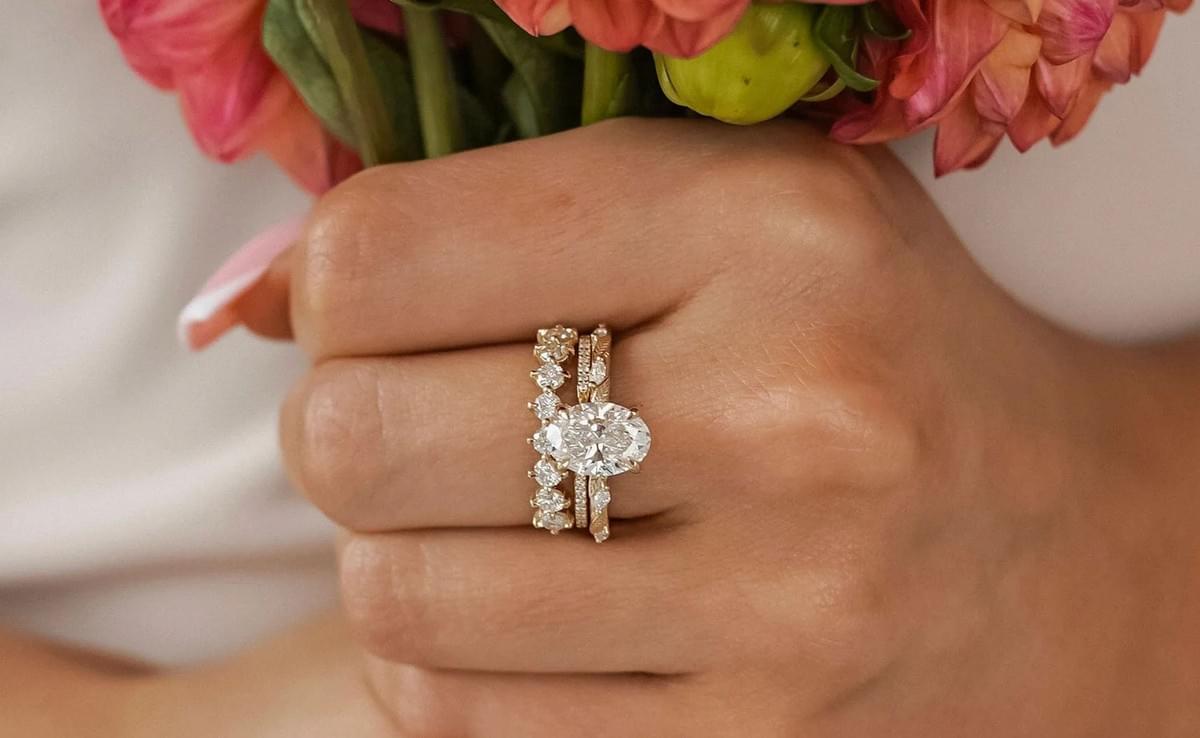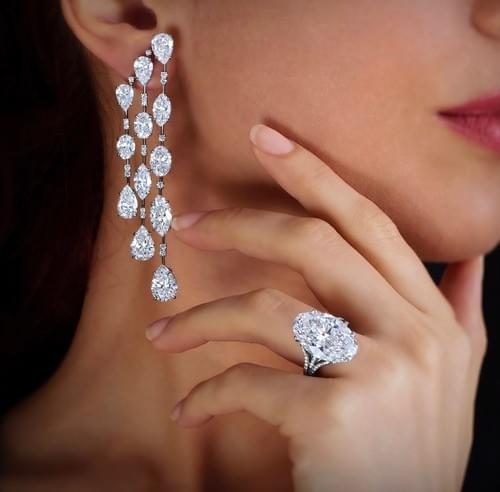
Association of Intelligent
Diamond International
- About
- Guide
- Designers
- Work with us
- …
- About
- Guide
- Designers
- Work with us
Association of Intelligent
Diamond International
- About
- Guide
- Designers
- Work with us
- …
- About
- Guide
- Designers
- Work with us
Lab-Grown Diamonds: The Complete Guide to the Future of Jewelry
Are Lab-Grown Diamonds Real Diamonds?
The most common question surrounding lab-grown diamonds is simple yet powerful: Are they real diamonds? The answer is an emphatic yes. Lab-grown diamonds share the same chemical composition, optical brilliance, and hardness as mined diamonds. They are made of crystallized carbon, not imitations like cubic zirconia or moissanite. What differentiates them is origin. Natural diamonds form under immense pressure deep underground over billions of years, while lab-grown stones are created in modern facilities using HPHT (High Pressure High Temperature) or CVD (Chemical Vapor Deposition) methods.
Today, major grading labs such as the Gemological Institute of America (GIA) certify lab-grown diamonds just like natural ones, grading cut, color, clarity, and carat weight. This recognition reinforces their legitimacy within the global gem trade. [GIA on Lab-Grown Diamonds]
Consumers are increasingly realizing that lab-grown diamonds are real, affordable, and ethical alternatives. At AIDI, we view them as not only authentic gemstones but also the symbol of a broader shift toward sustainable luxury.
Lab-Grown Diamonds vs Natural Diamonds

Appearance and Composition
To the naked eye, lab-grown and mined diamonds are virtually indistinguishable. Even gemologists need advanced instruments to tell them apart. Both rank a 10 on the Mohs scale, offering identical hardness and brilliance.
Price and Affordability
One of the most striking differences lies in cost. Lab-grown diamonds are typically 30–50% less expensive than natural diamonds of similar size and quality. This price accessibility makes larger, higher-clarity stones possible for younger buyers, especially Gen Z couples purchasing engagement rings.
👉 [2025 Lab-Grown Diamond Price Trends]
Ethical and Environmental Impact
Mined diamonds carry historical associations with conflict financing, land degradation, and carbon emissions. By contrast, lab-grown production avoids destructive mining, consumes less water, and can be powered with renewable energy. While production still requires significant electricity, advancements in green energy integration are closing the gap.
👉 [Why Choose Ethical Jewelry]
👉 [Bain 2025 Global Diamond Report]AIDI’s Take: The debate between natural and lab-grown is not about authenticity—it’s about values. Natural diamonds may carry geological romance, but lab-grown diamonds align with modern demands for sustainability, transparency, and responsible sourcing.
Lab-Grown Diamond Engagement Rings

A Modern Choice for Couples
In 2025, lab-grown diamond engagement rings are no longer niche—they are mainstream. Couples increasingly seek affordable luxury that aligns with their ethics. A 1.5-carat lab-grown engagement ring may cost the same as a 1-carat mined diamond, offering both greater size and savings.
👉 [Best Lab-Grown Diamond Engagement Ring Brands]
Celebrity Endorsements
Celebrities like Zendaya, Ariana Grande, and Hailey Bieber have embraced lab-grown jewelry, reshaping public perception of glamour. What was once controversial is now aspirational. Their visibility has accelerated consumer acceptance worldwide.
👉 [Celebrity Jewelry News Collection]
Fashion Meets Values
Beyond affordability, lab-grown engagement rings embody sustainable love—free from the controversies of conflict diamonds. For many couples, wearing a ring that represents both commitment and ethical responsibility is deeply symbolic.
The Sustainability Advantage
Environmental Responsibility
Traditional diamond mining consumes vast amounts of water, displaces soil, and scars ecosystems. Reports show lab-grown diamonds can reduce carbon emissions significantly, particularly when renewable energy powers production.
👉 [Are Lab-Grown Diamonds Truly Sustainable?]
👉 [Sustainable Gemstones and the Jewelry Industry]
👉 [United Nations SDGs – Responsible Consumption and Production]Ethical Sourcing
Lab-grown diamonds are inherently conflict-free, eliminating the risks of financing violence or exploitation in mining regions. This gives consumers peace of mind, especially those committed to ethical jewelry practices.
Consumer Confidence
Transparency is key. Companies now provide digital certificates and blockchain tracking, ensuring buyers know their diamond’s origin. This technological shift further strengthens the case for lab-grown gemstones.
Market and Industry Outlook
Rapid Growth
Industry forecasts show lab-grown diamonds reaching a market share of over 15–20% by 2030, with demand strongest in the U.S., China, and Europe. Younger demographics are driving this surge, drawn by affordability and ethics.
👉 [内链:2025 Lab-Grown Diamond Market Report]
Luxury Brand Reactions
- Pandora has fully committed to lab-grown diamonds.
- De Beers, historically resistant, has cautiously entered the space with its Lightbox line.
- Cartier and Tiffany remain conservative, emphasizing heritage.
👉 [内链:Luxury Brands and Lab-Grown Diamonds]
Investment Debate
While mined diamonds are marketed as rare and enduring, lab-grown diamonds challenge traditional perceptions of value. Their resale market remains uncertain, sparking debate over “sentimental vs financial value.”
Controversies and Criticism
- Resale Value Concerns: Critics argue lab-grown diamonds depreciate more quickly than natural diamonds. Retailers must manage expectations.
- Marketing Transparency: Some jewelers blur the line, presenting lab-grown diamonds as natural. This undermines trust.
- Greenwashing Accusations: Energy consumption in labs is still substantial, raising questions about whether sustainability claims are overstated.
👉 [Criticism of Lab-Grown Diamonds]
👉 [Rapaport Commentary on Lab-Grown Diamonds]AIDI’s Take: These controversies don’t invalidate lab-grown diamonds—they highlight the need for honest communication, traceable practices, and third-party verification.

AIDI’s View
At AIDI, we believe lab-grown diamonds represent the future of sustainable luxury. They make fine jewelry more accessible while aligning with values of ethics, transparency, and environmental care. Yet the industry must guard against complacency—affordability cannot come at the cost of credibility.
By connecting science with artistry and responsibility, lab-grown diamonds are more than an alternative—they are a foundation for the jewelry world of tomorrow.
👉 [AIDI Editorial on the Future of Ethical Luxury]
Call to Action
Want to stay ahead of the evolving diamond landscape?
Subscribe to the AIDI Newsletter for weekly insights.
Explore our latest blogs on lab-grown diamonds, sustainable gemstones, and ethical jewelry trends.

About
Subscribe to Daily Newsletter
2025 © AIDI Media. Use of this website is subject to terms of use.



